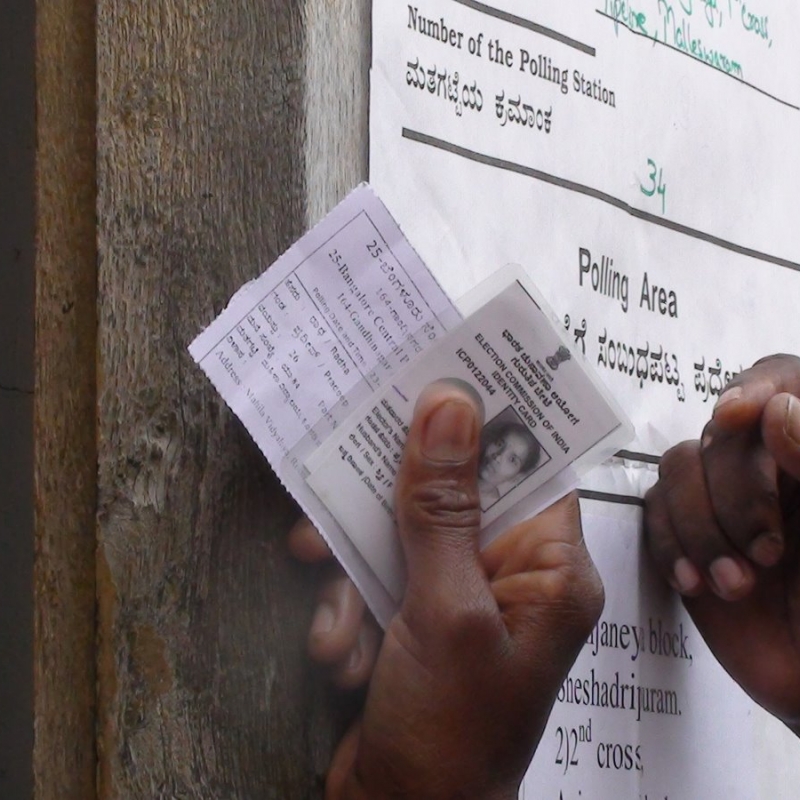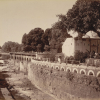Elections are not new to India. There are numerous mentions of republican forms of governments in Buddhist literature as well as in the accounts of Greek invaders who described some states as 'pure democracies'. This excerpt from V.S. Rama Devi and S.K. Mendiratta's book 'How India Votes: Election Laws, Practice and Procedure' sheds light on the history of voting and elections in ancient India. (Photo Source: Nilanjana Chaudhary/Al Jazeera/Flickr)
Elections in India are not a new phenomenon or a new concept born in modern times. Taking decisions to run their affairs, be they at the level of individual families or at the community level, collectively and with the consensus of all concerned, has been the pervading philosophy of Indian way of life from times immemorial. Our ancient scriptures dating back to the Vedic age are filled with references to republics and democracies prevailing in various parts of ancient India. Ancient historians have recorded graphic details of the people choosing their own heads, ganapaties, of the great Vaishali ganarajya, thousands of years back, to lead them in times of peace and war. They were assisted by other wise men and nobles in their decision making, like the present council of ministers.
Tracing the history of elections and evolution of representative governments in India, the Election Commission of India observed in its report after the first general elections in independent India in 1951–52 as follows:
[R]epublican forms of government existed in many parts of ancient India. There are numerous references to such Governments in the Buddhist literature. Even in the 4th Century BC, there was a republican federation known as the Kshudrak-Malla Sangha, which offered strong resistance to Alexander the Great. The Greeks have left descriptions of many other republican states in India, some of which were described by them as pure democracies while others were said to be ‘aristocratic republics’.

Apart from the evolution of the democratic form of government in sovereign states in ancient India, the country also developed system of autonomous and almost self-sufficient village communities, which later came to be known as village panchayats (Photo Source: Photo Division, Ministry of Information & Broadcasting, Government of India/Wikimedia Commons)
Although complete details of the working of the republican forms of government in ancient India are not available, it is known that in some of these republics, every adult male member had the right to vote and to be present in the general assembly, which decided all public affairs. With the increase of population and the growing complexities of the social structure, it became increasingly difficult for all citizens to assemble at one place for the purpose of deliberation on state affairs, and gradually this resulted in the evolution of some kind of representative government. We find numerous references to election, referendum, voting, ballot papers, etc., in the history of the Hindu polity.
The nature of franchise for election to the popular assemblies is not fully known. While in the aristocratic republics, the basis appears to have been a family, in other states, all adult male persons, who were not otherwise disqualified, appear to have had the right to vote. By naturalisation, even foreigners could become citizens, and acquire the right of vote.
A vote was known as ‘chhanda’, which literally means a ‘wish’. This expressive term was used to convey the idea that by voting a member was expressing his free will and choice. We also find description of the methods of collection of votes of citizens who could not be present at the meeting of the assembly. For purposes of voting in the assembly, there used to be multi-coloured voting tickets, called ‘shalakas’ (pins). These were distributed to members when a division was called and were collected by a special officer of the assembly, known as ‘shalaka grahak’ (collector of pins). This officer was appointed by the assembly as a whole. It was his duty to take the vote, which could be either secret or open.
Also Read | How India Votes: History of Elections During the British Rule
Apart from the evolution of the democratic form of government in sovereign states in ancient India as described above, the genius of India also evolved, as a natural growth, the system of autonomous and almost self-sufficient village communities, under every system of government. These communities, which lasted through the ages, were run on truly democratic lines without, of course, the outward trappings of the vote and the ballot box. In later days, they went by the name of village panchayats and were a vital force in the social life of the countryside.
Even after the republican states were absorbed within empires, the system of regulating the local corporate life through popular assemblies survived for a very long time. Almost every imperial conqueror left the conquered states and communities to carry on their administrative and social system in their own way as before. During the Muslim period, the affairs of the trade corporations and the villages continued to be carried on by popular assemblies. A fundamental change came with the British administration when revenue, judicial and legal affairs were centralised and conducted away from the villages. This factor, coupled with the consequent decay of the agricultural and industrial economy of the countryside, resulted in the deterioration of the corporate life of the rural communities and gradually the organisations based on popular will faded out.
In the context of history, therefore, the establishment by the Constitution of the democratic and parliamentary form of government in the country on the basis of adult franchise was like the rejoining of a historic thread that had been snapped by alien rule. Franchise on a liberal scale had been common in various parts of ancient India, and by providing for universal adult suffrage, the country boldly achieved the consummation of its electoral aspirations on a national basis.[i]
This is the first article in a two-part series. The second part, How India Votes: History of Elections During the British Rule, can be read here.
Excerpt reproduced from V.S. Rama Devi and S.K. Mendiratta's book How India Votes: Election Laws, Practice and Procedure (LexisNexis, 2007) with the permission of the publisher.
[i] Available at: https://www.eci.gov.in/files/file/7448-first-general-elections-in-india-vol-i-1951-1952/ (pp. 6–8), last accessed in May 2019.












